Sintra Day Tours from Lisbon
The Portuguese capital has tons going on with beautiful architecture, old buildings and an easily accessible coastline. However, some of the most exciting destinations are located just outside the city.
Go on a day tour from Lisbon to Sintra for the rugged beauty of this delightful hilltop town and its mountains, forests and fantastical palaces. Read on to find out more about what you can see, how to get there, ticket prices and when to go.
The Portuguese capital has tons going on with beautiful architecture, old buildings and an easily accessible coastline. However, some of the most exciting destinations are located just outside the city.
Go on a day tour from Lisbon to Sintra for the rugged beauty of this delightful hilltop town and its mountains, forests and fantastical palaces. Read on to find out more about what you can see, how to get there, ticket prices and when to go.
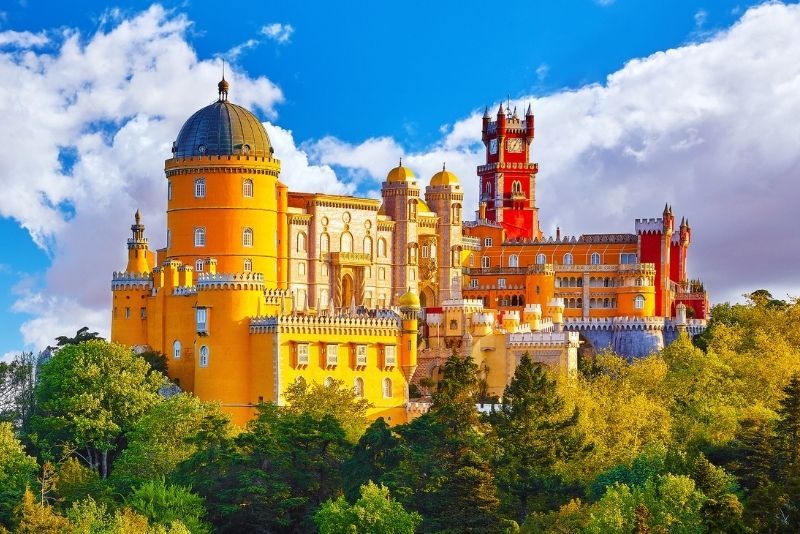
(0/24) checking Musement...
The Portuguese capital has tons going on with beautiful architecture, old buildings and an easily accessible coastline. However, some of the most exciting destinations are located just outside the city.
Go on a day tour from Lisbon to Sintra for the rugged beauty of this delightful hilltop town and its mountains, forests and fantastical palaces. Read on to find out more about what you can see, how to get there, ticket prices and when to go.

Here's everything you should to know about planning a visit to Sintra, one of the most exciting day trips from Lisbon.
How can I get to Sintra from Lisbon?
Located along a beautiful stretch of the Atlantic coast 30 kilometres north of Lisbon is the hillside town of Sintra.
By car
It takes about 30 minutes by car to get from Lisbon to Sintra, and the fastest route by car is on the A37.
By train
If you prefer to travel by rail, take the direct train from Rossio Station or Oriente to Sintra. The journey time is just under 1 hour. All train services in Lisbon are provided by Comboios de Portugal.
On a guided tour
When you book a day tour from Lisbon, you will be taken to Sintra by air-conditioned vehicle. Pickup and drop-off will either be from your accommodation or a designated meeting point.
You can also opt to join a jeep safari through forests, on dirt roads and along the edges of cliffs.
What will I see in Sintra?
Pena Palace & Park

The Pena Palace (Palácio Nacional da Pena) is a magnificent 19th-century building on top of the hills of Sintra. This fairytale-like palace was constructed by German architect, Baron Wilhelm Ludwig von Eschwege on the site of a medieval chapel dedicated to Our Lady of Pena.
It is an extravagant structure with brightly colored façades, decorative battlements and statues of mythological creatures. After marveling at the 19th-century Romanticism architectural style, tour the sumptuous rooms of the equally lavish interior.
Surrounding the palace the Pena Park oasis of natural beauty, spreading out for more than 200 hectares with secret paths, pavilions, lakes, exotic trees and ancient forest.
National Palace of Sintra

One of the foremost attractions in Sintra is the National Palace of Sintra, which is regarded as one of Portugal's best preserved medieval royal residences. Delve into Sintra's history, dating back to the 15th century.
Quinta da Regaleira
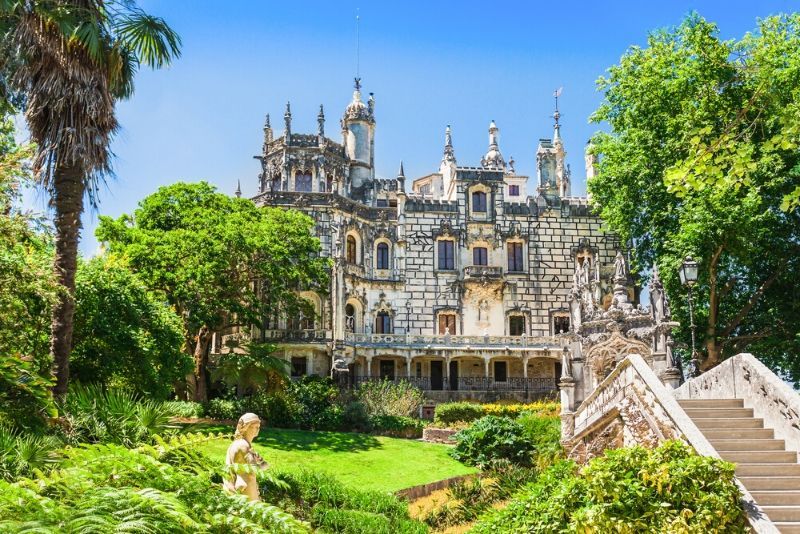
The Quinta da Regaleira looks like something out of a fantasy film, an early 20th-century Gothic palace of gargoyles, turrets, hidden tunnels and enchanted gardens. A wealthy Portuguese businessman commissioned the construction of this UNESCO World Heritage Site at the beginning of the last century.
After studying the building's exterior, step inside to tour such ornate rooms as the dining room and the Octagonal Room. Go into the Kings Room and look up at the ceiling adorned with portraits of kings and queens.
Stroll through underground walkways and walk down the Initiation Well, a subterranean well with a twisting stairway that descends 27 meters into the ground.
Monserrate Palace
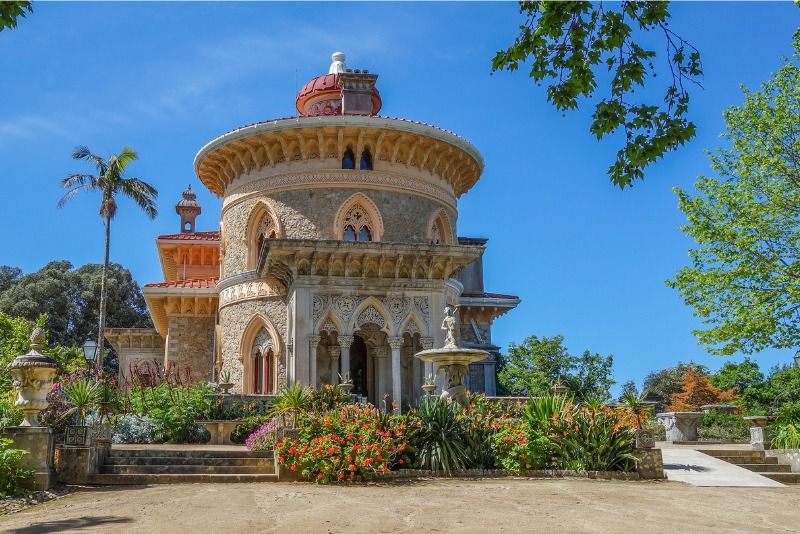
Long a refuge for writers, Monserrate attracted countless artists with its Romantic appeal and gardens. The Monserrate Palace was constructed in the 19th century, reflecting the myriad architectural influences seen in Lisbon.
Step inside the palace and admire the intricate details that bring to life the city's cultural heritage, or explore the gardens home to numerous exotic species.
Castle of the Moors

Towering above the palaces of Sintra is the Castle of the Moors, a 10th century fortification built during the Moorish ruling of the Iberian Peninsula.
Walk along its walls for stunning views of Sintra, and discover architectural elements such as the Door of Betrayal, silos, castle keep, the Royal Tower and Islamic neighborhood.
Queluz Palace
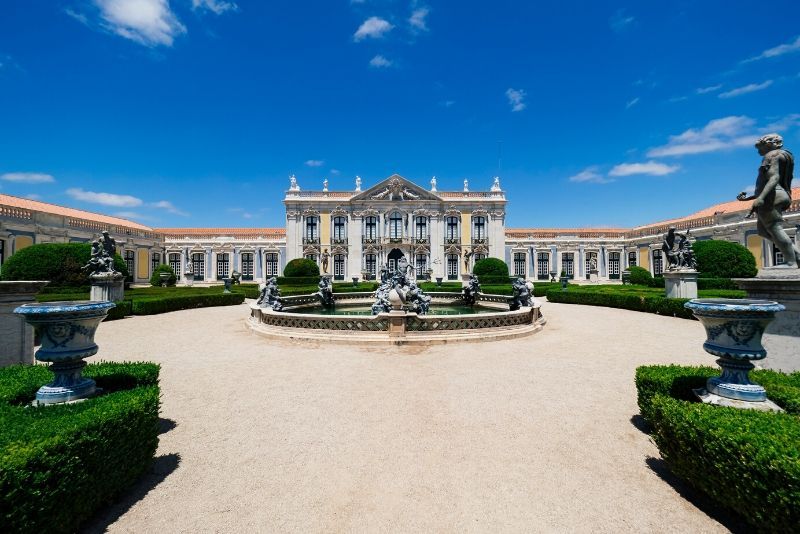
Situated between Lisbon and Sintra, Queluz Palace served as a royal residence and features opulent and stately rooms and gardens. You can tour its interiors and gain insight into the history of the royal family.
With its rococo, baroque and neoclassical elements, Queluz Palace is an excellent stop on your day trip and a foray into the country's architectural history.
What are the best Sintra tours from Lisbon?
From Lisbon to Sintra, Regaleira and Pena Palace Guided Tour
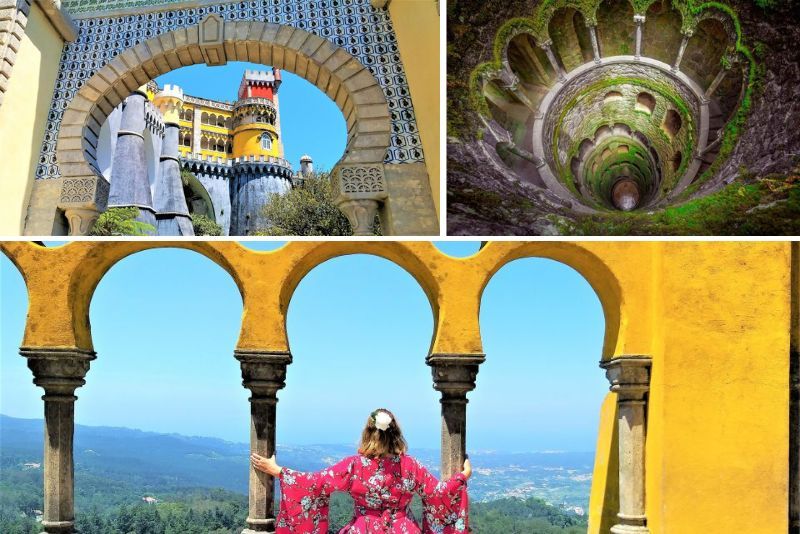
- Price: From €76 per person
- Duration: 8 hours
- Includes: Transportation, ticket to Quinta da Regaleira, tour guide
From Lisbon to Sintra and Cascais Small Group Full-Day Tour
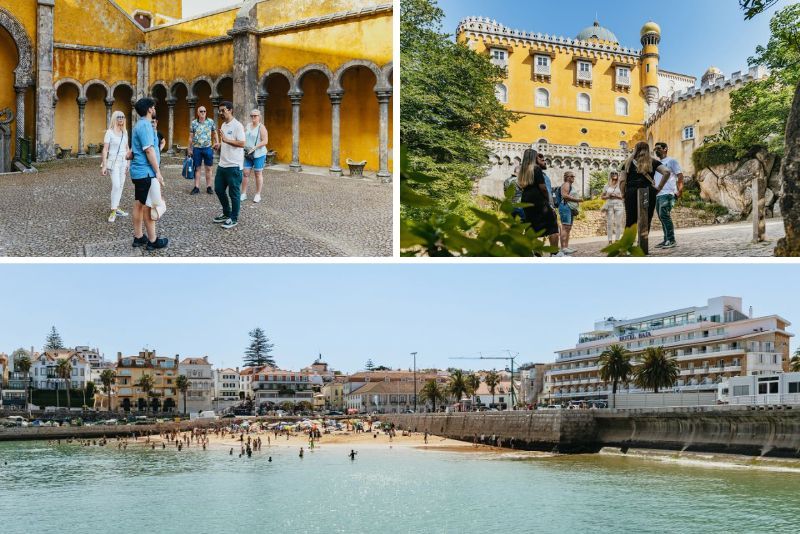
- Price: From €77 per person
- Duration: 8 hours
- Includes: Transportation with pickup and drop-off, ticket to Quinta da Regaleira, tour guide
Full-Day Tour of Sintra, Pena Palace, Cabo da Roca & Cascais from Lisbon with Lunch

- Price: From €97 per person
- Duration: 9 hours
- Includes: Transportation, ticket to Pena Palace, lunch, tour guide
Sintra with Pena Palace & Cabo da Roca Hiking from Lisbon

Go on a hiking excursion along coastal trails in the Parque Natural de Sintra-Cascais and enjoy panoramic views of the coastline and Serra de Sintra. The sunsets seen from here are truly breathtaking.
- Price: From €65 per person
- Duration: 6 hours and 30 minutes
- Includes: Transportation, hiking tour, tour guide
What is the price of a trip to Sintra?
The average price for a Sintra tour from Lisbon is between €50 and €80 per person.
Some of these include skip-the-line tickets to the Pena Palace, saving you a lot of time and hassle at the resort town's most popular attractions.
How long do Sintra trips last?
The majority of Sintra tours from Lisbon last between 8 hours and 9 hours, but shorter and longer excursions are also available.
When is the best time to go to Sintra?
The best time for your excursion from Lisbon to Sintra is either in the spring or autumn. Sintra is atop of a hill, not so far from the ocean and surrounded by forest. Therefore, temperatures are never very high, and the climate is pleasant.
To avoid the crowds, avoid the summer time and try to go in the early morning. Avoid visiting on Sundays since that's when Portuguese nationals and residents can enjoy free entry to attractions and queues can get extremely long.
Are there any tours to Sintra from other cities in Portugal?
Yes, there are tours departing from Cascais to Sintra.
Travel Tips
- You will most likely be doing a fair amount of walking during your day trip from Lisbon to Sintra, so wear a comfortable pair of shoes.
- Bring some bottled water and snacks with you in case your tour doesn't provide them.
- During the summer months, the Pena Palace is quite busy. Therefore, you might prefer visiting at other times of the year when the crowds are smaller.
- The Pena Palace sits on top of a steep hill. If you want to avoid the 50-minute uphill walk from the train station, take the 434 bus. It departs from the station and stops close to the palace grounds. If you book a tour from Lisbon, you will be conducted to the Pena Palace.
- If you are travelling during the summer, bring sunscreen, sunglasses and a hat with you.
- Visit Sintra during the morning, since it can get dark soon during the afternoon, especially in winter months.


